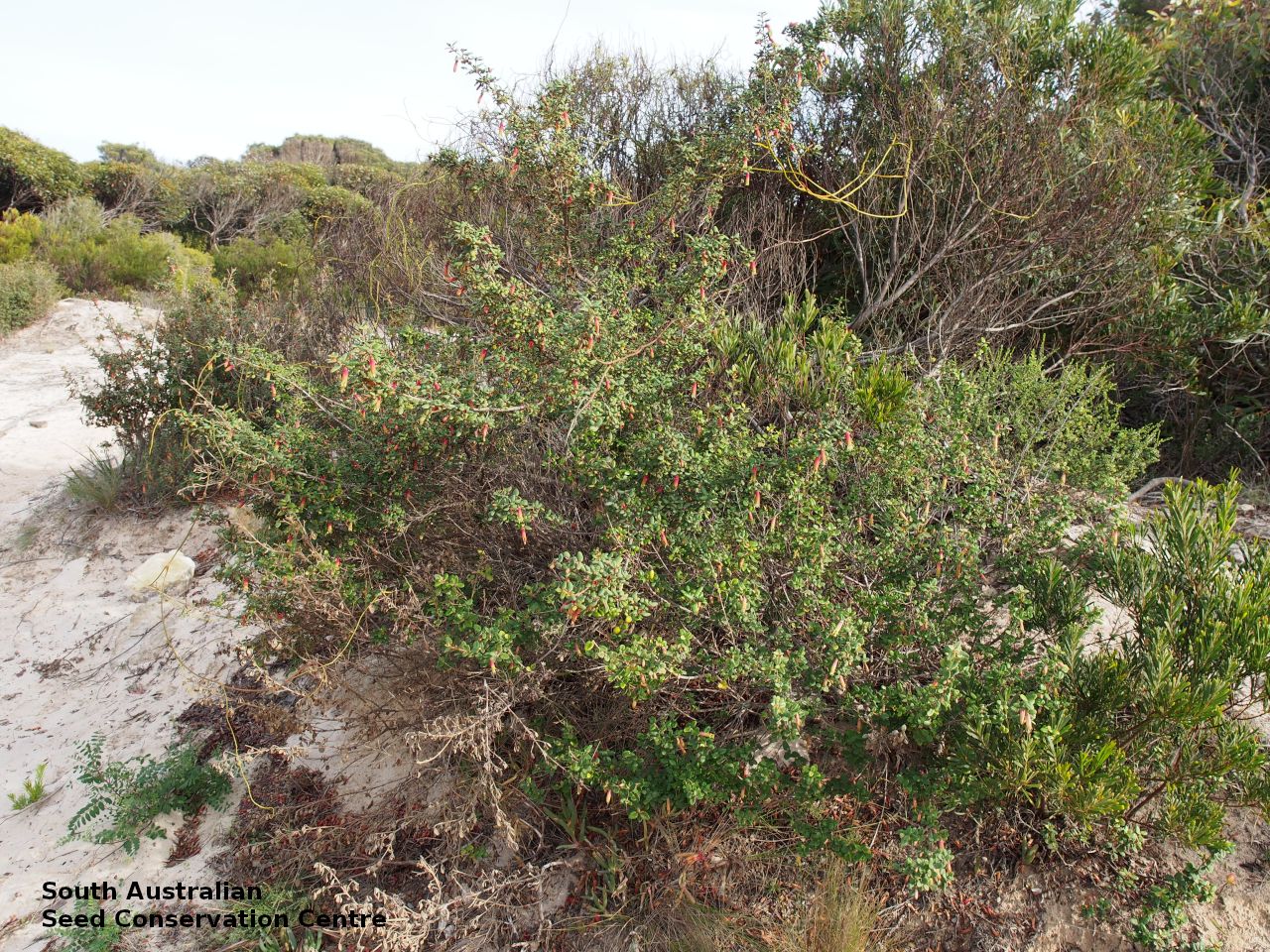
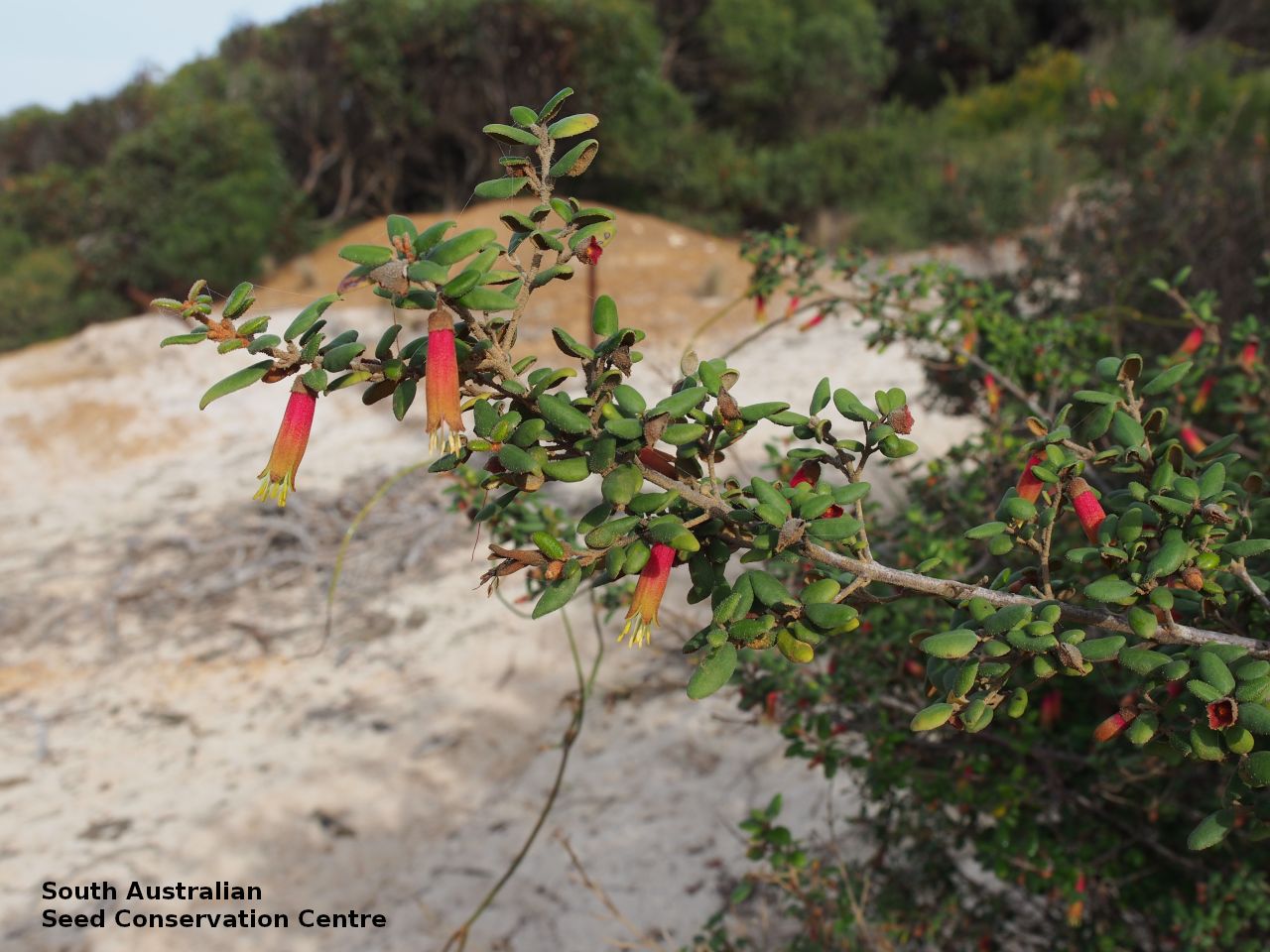
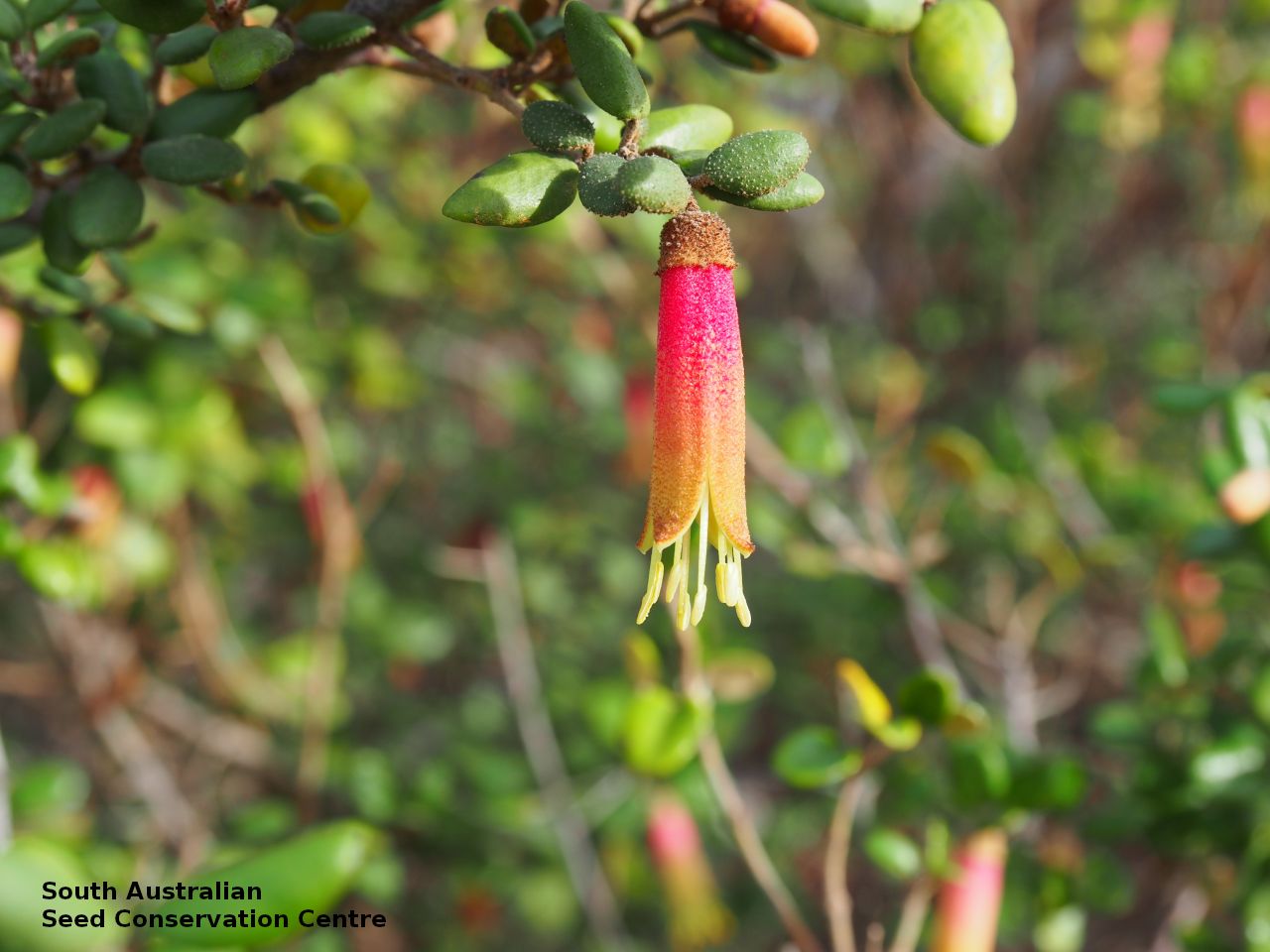
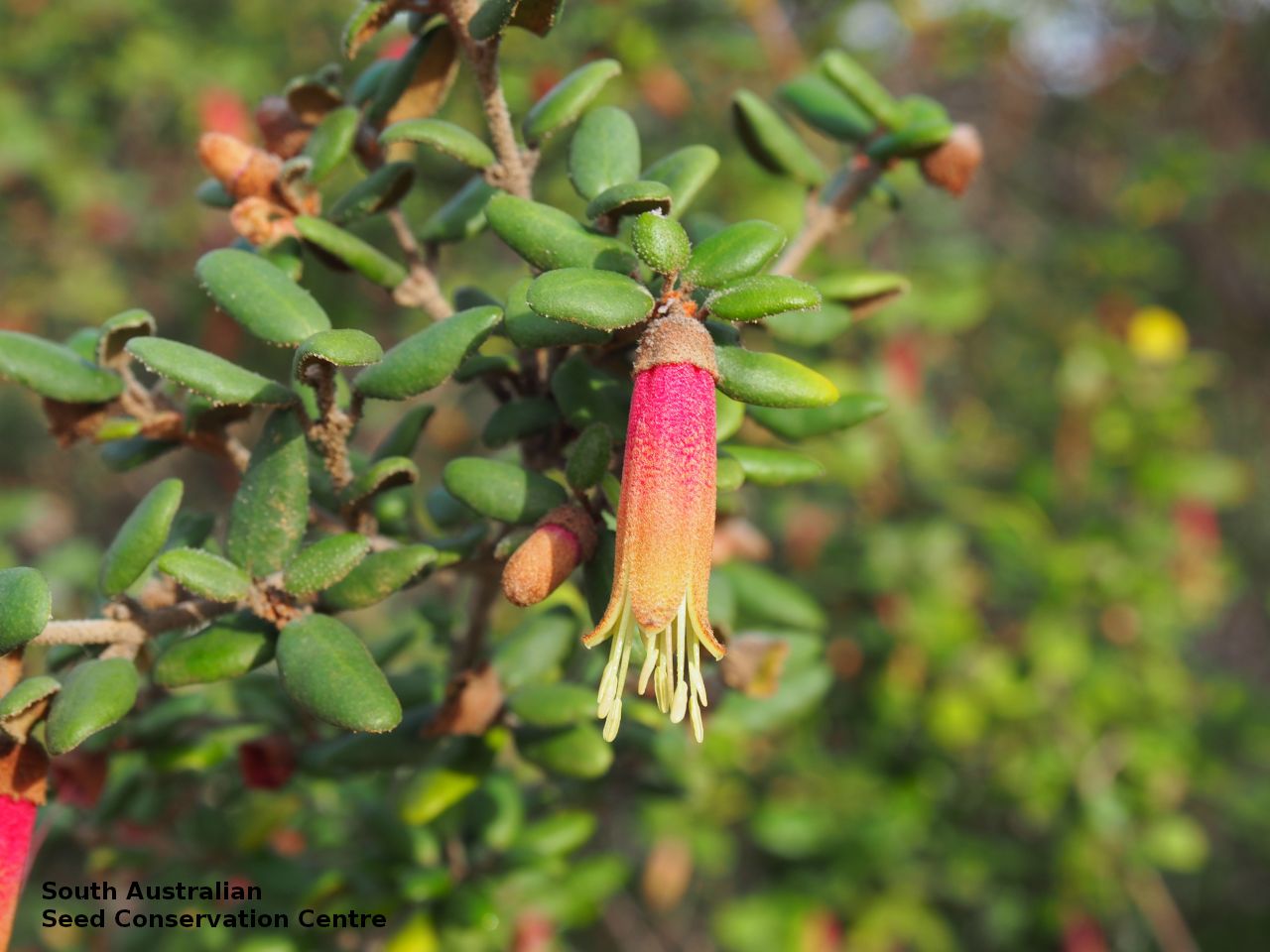
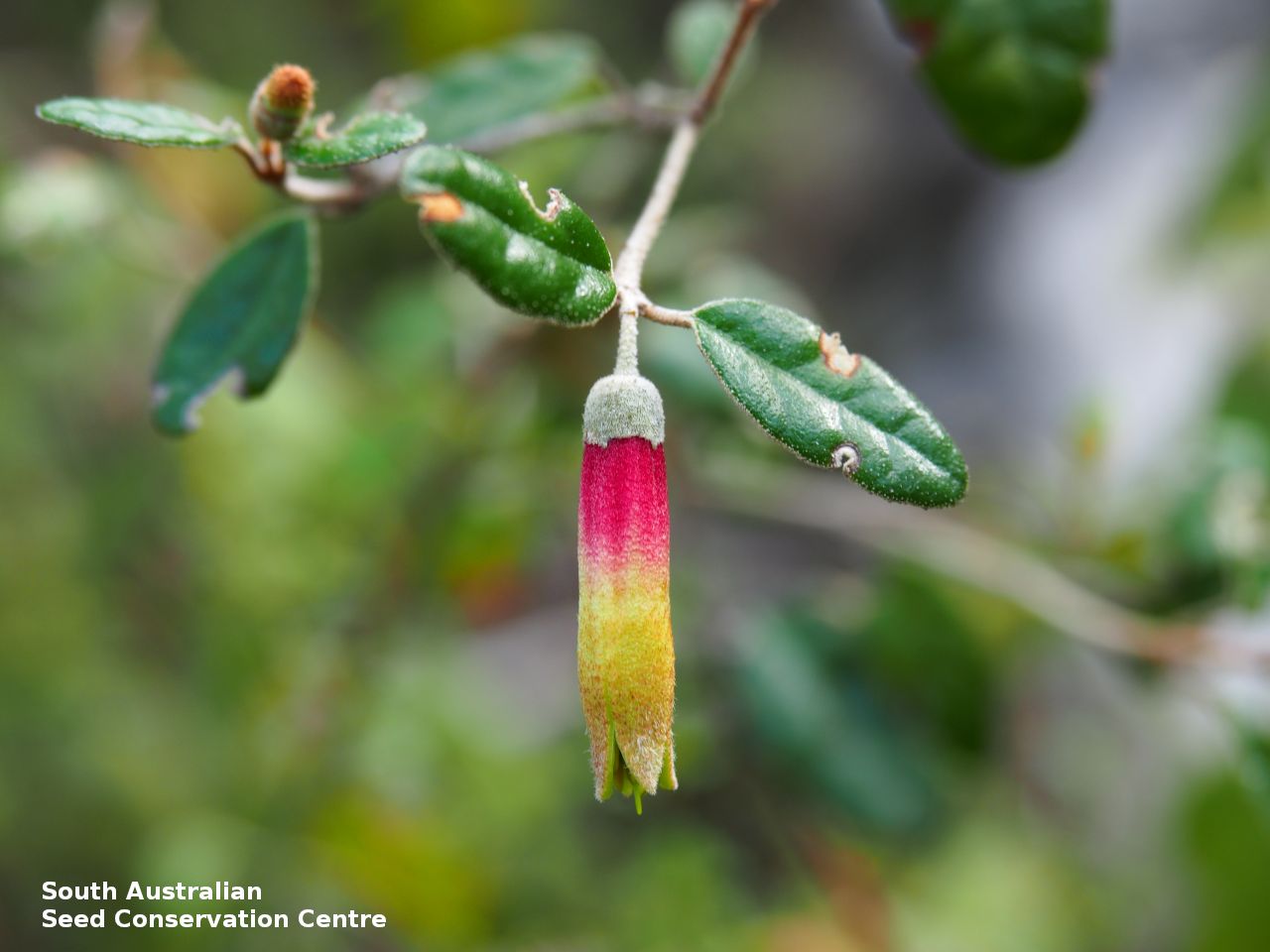
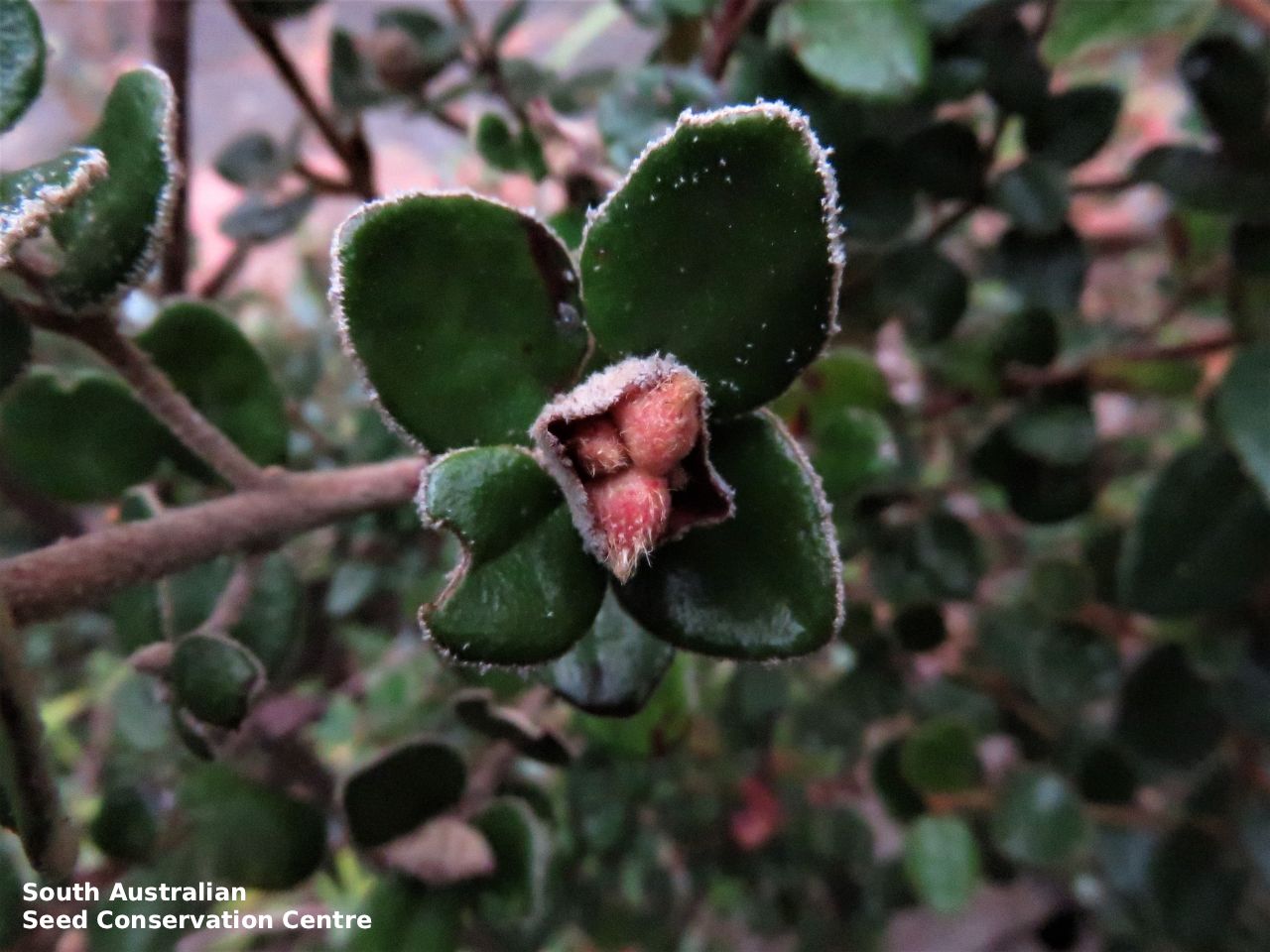
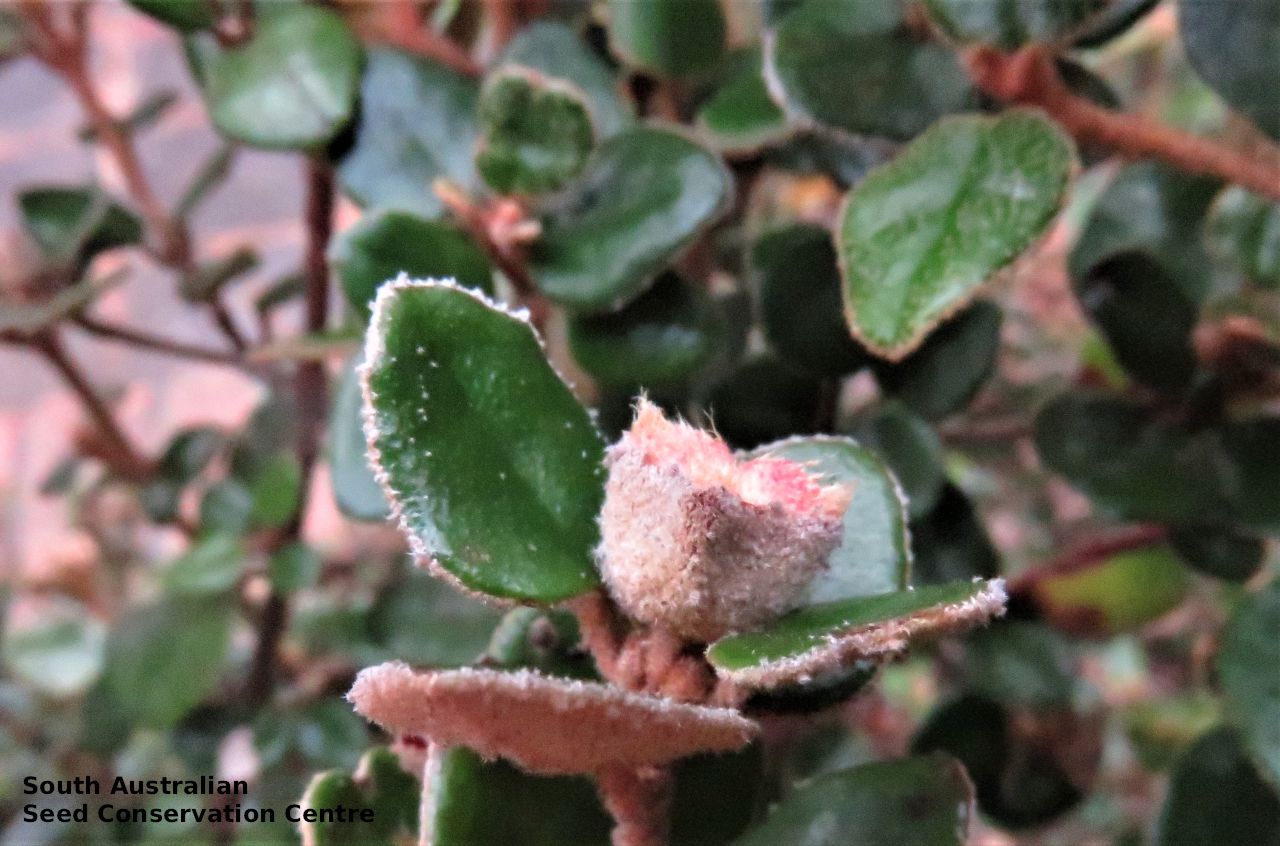
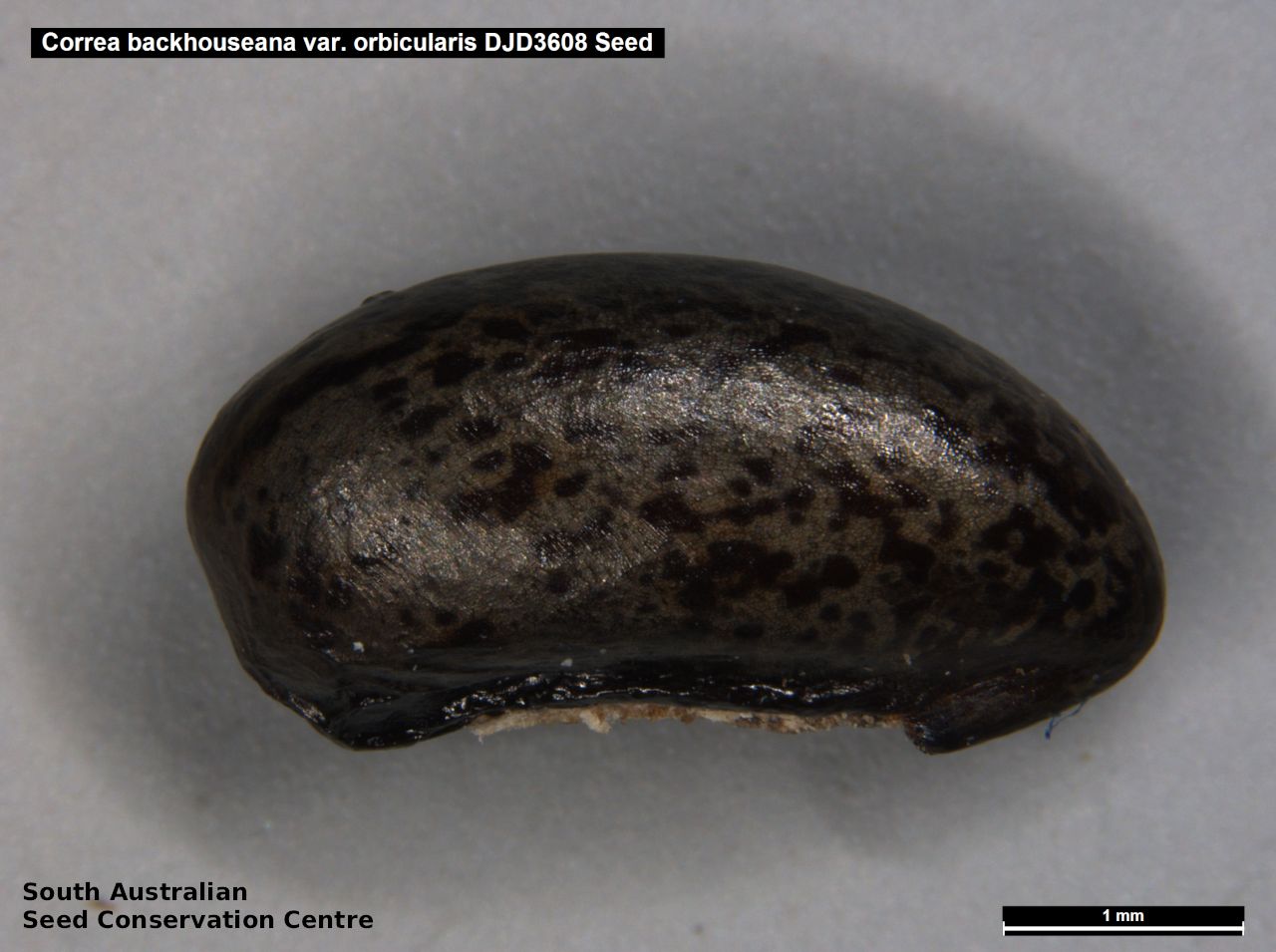

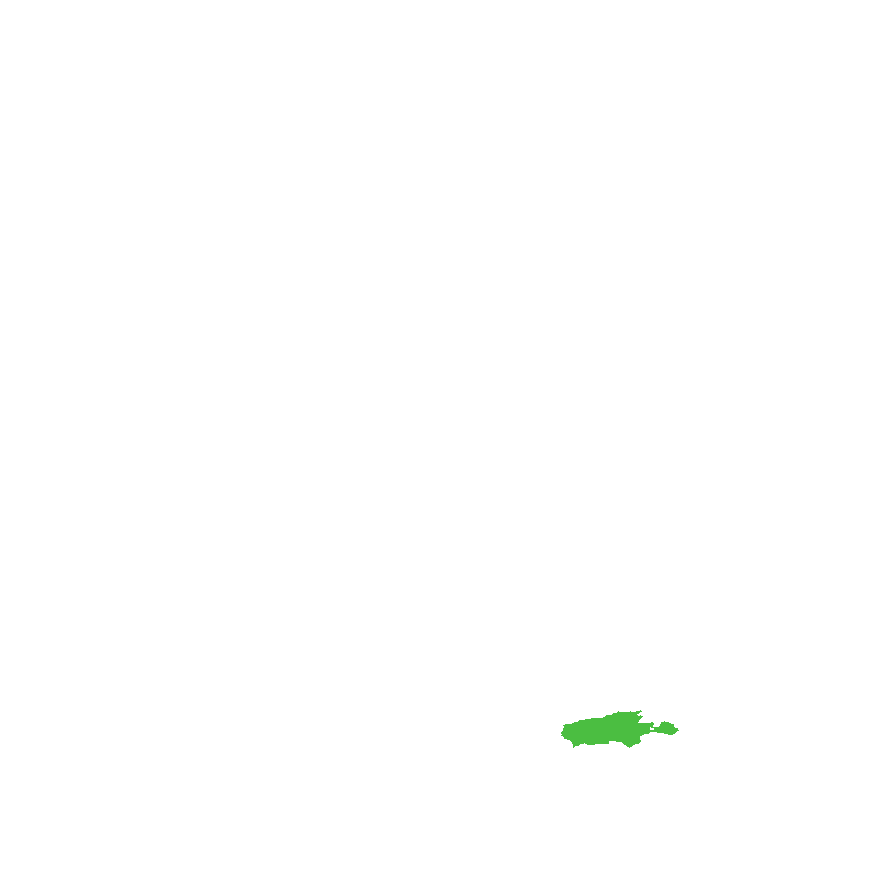
Botanical art
Prior names
Correa rubra var. orbicularis
Common names
Round-leaf Kangaroo Island Correa
Round-leaf Correa
Kangaroo Island Correa
Etymology
Correa named after Jose Francisco Correa de Serra (1751-1823), a Portuguese botanist. Backhouseana name after James Backhouse (1794-1869), an English-born naturalist and Quaker missionary who collected plants in Australia including the type specimen for the species. Orbicularis from the Latin 'orbis' meaning circle or disk and the diminutive 'ulus' meaning little; referring to its little circular leaf shape. It was originally applied by J.M. Black to specimens from Kangaroo Island, but not validly published.
Distribution and status
Endemic to South Australia and found only on Kangaroo Island, growing in coastal heath on sand, often over limestone. Native. Common in South Australia.
Herbarium region: Kangaroo Island
AVH map: SA distribution map (external link)
Plant description
Erect branching shrub to 1 m high. Leaves broadly ovate to circular, to 1.5 cm long, leathery, smooth and glabrous above, densely tomentose with minute hairs beneath. Inflorescence solitary and terminal to short branchlets, the terminal leaves not modified to form bracts. Calyx hemispherical, to 3 mm high, closely rusty-tomentose, margin truncate. Corolla cylindrical, red with yellowish lobes. Anthers well exserted, narrowly oblong or narrowing towards apex. This variety differ from the other variety found in South Australia, Correa backhouseana var. coriacea which have corolla greenish cream to red with yellowish tips to lobes and ovate rather than broad ovate to circular leaves. Flowering between August and November. Fruits are pale brown capsule enclose by the sepals. Seed embryo type is linear fully developed.
Seed collection and propagation
Collect seeds between October and December. Collect mature capsules, those that are turning a pale straw colour and contain hard seeds, either by hands or place small breathable bags over immature capsules to collect seed. Capsules maybe hard to see as it is enclose by the sepals. Place the capsules in a tray and leave to dry for a weeks. Then rub the capsules gently by hand to dislodge the seeds. Be very careful as the seed coat is thin and easily damaged. Use a sieve to separate the unwanted material. Store the seeds with a desiccant such as dried silica beads or dry rice, in an air tight container in a cool and dry place. This species has morphophysiological dormancy and can be difficult to germinate.
| Location | No. of seeds (weight grams) | Number of plants | Date collected | Collection number Collection location | Date stored | % Viability | Storage temperature |
|---|---|---|---|---|---|---|---|
| MSB | 1,100 (10.25 g) | 30-40 | 20-Dec-2005 | TEE10 Kangaroo Island |
Number of plants: This is the number of plants from which the seeds were collected.
Collection location: The Herbarium of South Australia's region name.
% Viability: Percentage of filled healthy seeds determined by a cut test or x-ray.